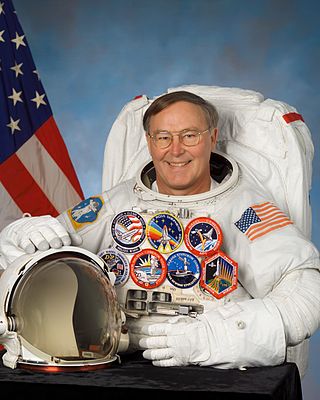
Jerry Lynn Ross is a retired United States Air Force officer, engineer and a former NASA astronaut. He is a veteran of seven Space Shuttle missions, making him the joint record holder for most spaceflights. His papers, photographs and many personal items are in the Barron Hilton Flight and Space Exploration Archives at Purdue University. He was inducted into the Astronaut Hall of Fame during ceremonies in May 2014.

Koichi Wakata is a Japanese engineer and a JAXA astronaut. Wakata is a veteran of four NASA Space Shuttle missions, a Russian Soyuz mission, and a long-duration stay on the International Space Station. During a nearly two-decade career in spaceflight, he has logged more than eleven months in space. During Expedition 39, he became the first Japanese commander of the International Space Station. Wakata flew on the Soyuz TMA-11M/Expedition 38/Expedition 39 long duration spaceflight from 7 November 2013 to 13 May 2014. During this spaceflight he was accompanied by Kirobo, the first humanoid robot astronaut.

STS-72 was a Space Shuttle Endeavour mission to capture and return to Earth a Japanese microgravity research spacecraft known as Space Flyer Unit (SFU). The mission launched from Kennedy Space Center, Florida on 11 January 1996.

Nancy Jane Currie-Gregg is an American engineer, United States Army officer and a NASA astronaut. Currie-Gregg has served in the United States Army for over 22 years and holds the rank of colonel. With NASA, she has participated in four space shuttle missions: STS-57, STS-70, STS-88, and STS-109, accruing 1,000 hours in space. She currently holds an appointment as a professor of practice in the Department of Industrial & Systems Engineering at Texas A&M University.
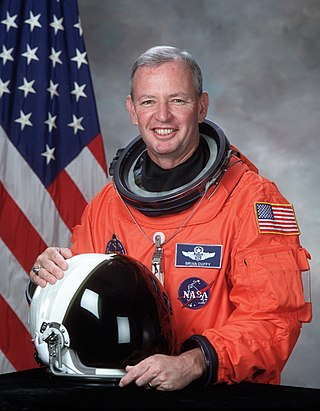
Brian Duffy is a retired U.S. Air Force colonel and a former NASA astronaut. He flew aboard four Space Shuttle missions.

Patrick Graham Forrester is a NASA astronaut, engineer, and former Chief of the Astronaut Office. He is a retired United States Army colonel and Army aviator. He is married and has two children.

Michael Landon Gernhardt is a NASA astronaut and manager of the Environmental Physiology Laboratory, and principal investigator of the Prebreathe Reduction Program (PRP) at the Lyndon B. Johnson Space Center.

Richard Michael Linnehan is a United States Army veterinarian and a NASA astronaut.

Richard Alan "Rick" Mastracchio is an American engineer and former NASA astronaut. He has flown on three NASA Space Shuttle missions as a mission specialist in addition to serving as a Flight Engineer on the Soyuz TMA-11M long duration mission aboard the International Space Station. He is currently the Senior Director of Operations for Commercial Resupply Services at Orbital ATK.
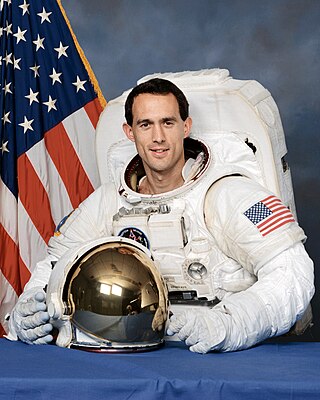
James Hansen Newman, Ph.D. is an American physicist and a former NASA astronaut who flew on four Space Shuttle missions.

Scott Edward Parazynski is an American physician and a former NASA astronaut. A veteran of five Space Shuttle flights and seven spacewalks, Parazynski's latest mission was STS-120 in October, 2007 – highlighted by a dramatic, unplanned EVA to repair a live solar array. In May 2016 he was inducted into the United States Astronaut Hall of Fame. He retired from NASA in March 2009 to pursue entrepreneurial opportunities in the private sector, and he is currently the CEO of a technology start-up. He is the first person to have both flown in space and summited Mount Everest, the highest point on Earth.

Pierre Joseph Thuot is a retired United States Navy captain and NASA astronaut. He went into space three times, spending over 650 hours in space, including over 15 hours in three space walks. He is a former U.S. record holder for time spent on one spacewalk, and participated in the first three-person spacewalk.

Daniel M. Tani is an American engineer and retired NASA astronaut. He was born in Ridley Park, Pennsylvania, but considers Lombard, Illinois, to be his hometown.

Mikhail Vladislavovich Tyurin is a former Russian cosmonaut who flew several missions to the International Space Station and completed four spacewalks during his career. He was awarded the title Hero of the Russian Federation for his work as a cosmonaut.

Carl Erwin Walz is a retired NASA astronaut currently working for Orbital Sciences Corporation's Advanced Programs Group as vice president for Human Space Flight Operations. Walz was formerly assigned to the Exploration Systems Mission Directorate at NASA Headquarters in Washington, D.C. He was the Acting Director for the Advanced Capabilities Division in the Exploration Systems Mission Directorate, and was responsible for a broad range of activities to include Human Research, Technology Development, Nuclear Power and Propulsion and the Lunar Robotic Exploration Programs to support the Vision for Space Exploration.

STS-119 was a Space Shuttle mission to the International Space Station (ISS) which was flown by space shuttle Discovery during March 2009. It delivered and assembled the fourth starboard Integrated Truss Segment (S6), and the fourth set of solar arrays and batteries to the station. The launch took place on 15 March 2009, at 19:43 EDT. Discovery successfully landed on 28 March 2009, at 15:13 pm EDT.

Stephanie Diana Wilson is an American engineer and a NASA astronaut. She flew to space onboard three Space Shuttle missions, and is the second African American woman to go into space, after Mae Jemison. As of 2022, her 42 days in space are the second most of any female African American astronaut, having been surpassed by Jessica Watkins in 2022.
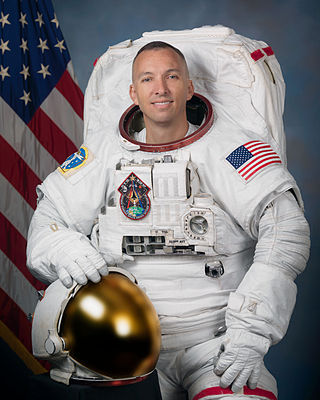
Randolph James "Komrade" Bresnik is a retired officer in the United States Marine Corps and an active NASA astronaut. A Marine Aviator by trade, Bresnik was selected as a member of NASA Astronaut Group 19 in May 2004. He first launched to space on STS-129, then served as Flight Engineer for Expedition 52, and as ISS Commander for Expedition 53.

Akihiko Hoshide is a Japanese engineer, JAXA astronaut, and former Commander of the International Space Station. On August 30, 2012, Hoshide became the third Japanese astronaut to walk in space.
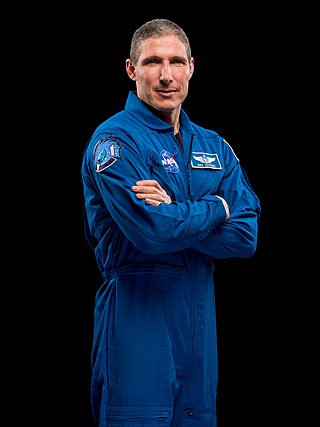
Michael Scott Hopkins is a United States Space Force colonel and NASA astronaut. Hopkins was selected in June 2009 as a member of the NASA Astronaut Group 20. He made his first spaceflight as a Flight Engineer on Soyuz TMA-10M/Expedition 37/Expedition 38, from September 2013 until March 2014. He is the first member of his astronaut class to fly in space. Hopkins is the first astronaut to transfer to the U.S. Space Force, participating in a transfer ceremony on the International Space Station.






















